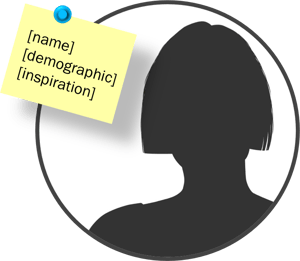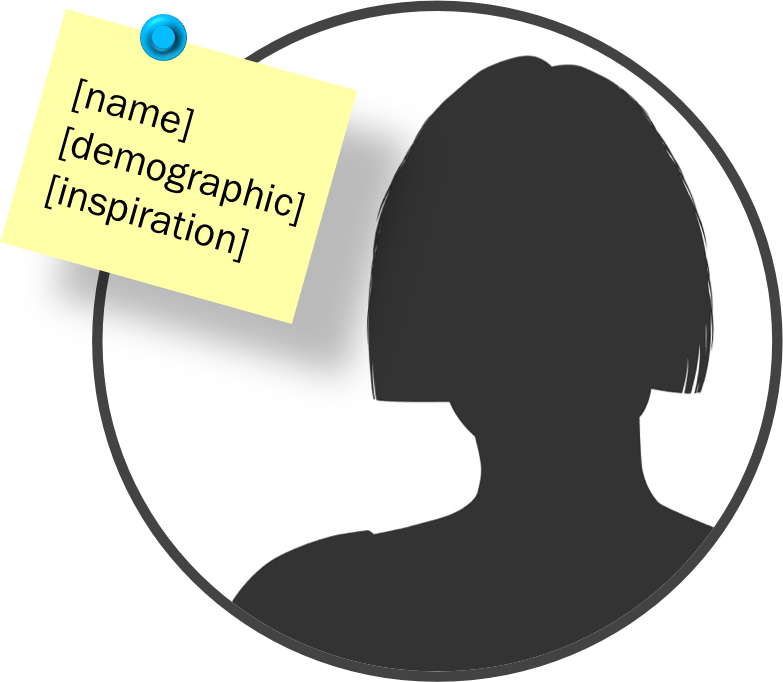Creating and developing donor personas is a huge step in building your fundraising effectiveness and driving results. On a broader level it’s called market segmentation—segmenting the market to find what appeals and messaging strategies work with particular market segments. Donor personas bring all that work to life, focused on creating detailed images of each of your major donor types.
What is a Donor Persona?
 I like Elizabeth Chung’s definition in her blog post “How to Create Donor Personas: Step One:”
I like Elizabeth Chung’s definition in her blog post “How to Create Donor Personas: Step One:”
Donor personas are archetypes of your ideal donors. Based on real data about your current and potential donor base—including demographics, behavior patterns, goals, interests, and concerns—these profiles illustrate the types of people with whom your organization wants to engage.”
Pay particular attention to the term “real.” You gather real data on your current and prospective donors and then create a relatively detailed profile of that particular persona. You may end up with three to ten or more donor personas, depending on how deeply you want to segment your audience and how narrow you plan to target your communication.
What Does a Donor Persona Look Like?
There will, of course, be key differences between your donor personas and those of nearly every other nonprofit. You custom tailor them for your organization. But there are a few key things that should be included:
- Demographic characteristics: age, gender, income • Interests, goals, challenges
- Past giving to your organization and others
- Social network use
- Response rates to communication channels
- Objections to donating to your cause
- Real quotes from interviews with these personas
- Messaging that resonates
- Photo of the persona that helps you and your team connect
One item on this list that can really help bring the personas to life are the quotes that you collect during interviews.
Why Do I Need Donor Personas?
When reaching out to current and potential donors it is absolutely essential that you know who they are, what motivates them to donate, what they expect from you, and how best to reach them with the messages that will activate donations. All that can be found within your detailed donor persona.
Those personas can be used to drive all your marketing and communication campaigns as well as drive your daily conversations with staff members and donors. The personas get everyone on the same page and, with the detailed information they provide, help you directly hit the target with the donors you are trying to reach and activate.
If you don’t have personas backed up by real data, you’re reaching out into the darkness trying to guess what might work with donors. The result will be hit-or-miss success rates and perhaps, worse, turning off donors with the wrong messages.
How Do I Create Donor Personas?
A starting point is to work through the data that you already have on your donors. This can be information from your CRM system or donor database. It can also be social media and website analytics that can readily identify location, income, gender, and age.
All that can prove very helpful in getting a better handle on your donors. However, it’s going to take personal interviews with a select group of donors that fit into your broad categories to get you to the next level of really defining donor personas.
Set up one-on-one phone interviews by reaching out to existing donors, those who have investigated your organization but didn’t donate, as well as a few that meet your target for new donations. It’s also a great idea to record the phone interviews so that you can go back and mine the information for quotes as well as for a deeper understanding of what was actually said.
I like the post titled “5 Questions to Ask Yourself When Creating a Donor Persona.” These questions explore topics such as:
- Organizational awareness
- How donors gather information
- What triggers or motivations inspire them to donate
- How they decide to donate
- Objections or concerns they may have before making a donation
- Concerns about your organization in particular
As you come away from those interviews, start gathering the insights you’ve collected and sifting them into your different buyer personas. These should be distinctly different personas that can help you target your communication to each one and thereby motivate donations.
The article at WealthEngine titled “Five Steps to Create Donor Personas” can provide more insight. I particularly like the matrix approach they demonstrate. This sorts the big categories down the left side (demographics, interests, giving habits, capacity to give, communication, and networks) with each different persona across the top. This allows you to readily compare the differences and similarities between the personas you’re starting to develop.
Another option to help you get started is the HubSpot free template called “The Nonprofit’s Guide to Creating Donor Personas.”
Keep Refining Your Personas and Developing Your Marketing Program
Once you’ve created your first round of donor personas, it will be time to start refining them. As your marketing program takes strides in reaching out to those personas, you’ll start learning even more about what works and what doesn’t work. You’ll find out if your interviewees actually walk the talk.
When you have that data, it’s time to go back to your personas and make the necessary adjustments to update the relevant profile. Plus, you can also get back on the phone and open interviews with new donors and prospective donors.
It can be particularly enlightening to interview those who’ve elected not to donate. Find out what’s causing them to hesitate. Those objections can be the most valuable in developing your marketing programs.
Next Steps
Once you have a clearer picture of who your donors are, Campaign Now can help your organization grow through the right data and direct marketing techniques.
Leverage their expertise for your organization. Give them a call. Contact them at (855) 329-4327 or info@campaignnowonline.com.





